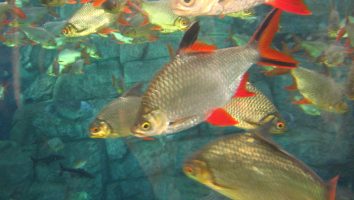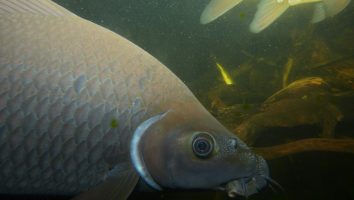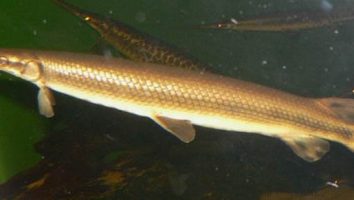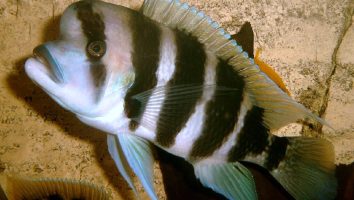The Hongi is a beautiful freshwater fish that is sadly underrated.
This species is not as popular as it should be, but we think that’s going to change.
As more and more people learn about the Hongi and how awesome they are, we think they’re going to become one of the most popular freshwater fish around.
And that’s why we made this guide. To show you everything you need to know about Hongi care and why this fish is so awesome.
We’ll go over their diet, tank mates, size, lifespan, and more!
Table of contents
Species overview
Hongi (scientific name: Hypseleotris compressa) is a type of gudgeon that’s found in various parts of Australia and New Guinea.
They prefer to live in murky water with a lot of vegetation. This is something that’s common among many species of freshwater fish that come from Australia.
Hongis are very peaceful fish and get along well with other tank mates. They are also very hardy and can withstand a wide range of water conditions.
The main reason why Hongis are so popular is because of their beautiful coloration. They are orange with black stripes running down their sides. This makes them a very attractive addition to any freshwater aquarium.
Appearance

The Hongi is a very distinctive looking fish that is sure to stand out in any aquarium. Perhaps the most defining feature of this species is their long, thin, and slightly transparent fins.
The Hongi has a very long and thin body. This gives them a snake-like appearance that is further enhanced by their fins.
The Hongi’s dorsal and anal fins are very long and thin. They start about two-thirds of the way back on the fish’s body and extend almost to the end of the tail.
The Hongi’s caudal fin is forked and symmetrical. It is also very long and thin, but not quite as long as the dorsal and anal fins.
The Hongi’s pectoral fins are also long and thin. They are shorter than the other fins, but still quite noticeable.
The Hongi’s ventral fins are very small and located about halfway down the body.
The Hongi’s head is long and thin with a pointed nose. They have large eyes that are located on the sides of their head.
The Hongi’s mouth is located at the end of their snout and is slightly downward facing.
The Hongi is a very striking fish that is sure to add a unique touch to any aquarium.
Lifespan
The lifespan of a Hongi is around 10 years, but some have been known to live up to 15 years in captivity. Again, the level of care they receive will play a big role in how long they live.
These fish are prone to a few health problems, but they’re nothing that can’t be easily avoided with good husbandry.
Size
The Hongi is a small fish, only growing to be about 2-3 inches in length.
Tank
Tank Size
The minimum tank size for a Hongi is 50 gallons. If you’re looking for a smaller freshwater fish, this is not the fish for you.
Water Parameters
Hongi Cardinalfish prefer a tropical marine aquarium with a temperature between 75 and 82 degrees Fahrenheit. They do best in an aquarium with a moderate current and plenty of hiding places.
The pH of the aquarium should be between 8.1 and 8.4 and the salinity should be between 1.020 and 1.025.
- Water Temperature: 75 to 82 degrees Fahrenheit
- pH Levels: 8.1 to 8.4
- Salinity: 1.020 to 1.025
What To Put In Their Tank
Hongi cichlids are one of the few species of fish that can get by without a lot of decorations in their tank.
While you don’t need to worry about too much in terms of plants and rocks, we still recommend including a few pieces of driftwood.
This will give them something to chew on (which they love to do), and it also provides a place for them to hide if needed.
The substrate you use in their tank is also up to you. They’re not fussy when it comes to this, so feel free to use whatever you want.
Just be sure that it’s not too sharp or abrasive. These fish are known to be a bit clumsy, and they can easily hurt themselves on rough substrate.
Common Diseases
The Hongi is a freshwater fish that is relatively hardy and resistant to disease. However, this doesn’t mean that they’re immune to sickness.
The most common disease that affects this species is ich. Ich is a parasite that can cause a lot of problems for your fish if it’s not treated quickly.
The most obvious symptom of ich is the presence of white spots on the body of your fish. If you notice this, it’s important to act fast and begin treatment immediately.
Ich is relatively easy to treat if it’s caught early, but it can quickly become fatal if it’s left unchecked.
Another thing to look out for is fungal infections. These are relatively rare in freshwater fish, but they can still happen. The most common symptom of a fungal infection is a white cotton-like growth on the skin of your fish.
If you notice this, you’ll need to treat it immediately. There are a few different ways to treat fungal infections, so you’ll need to consult your vet or a fish expert to figure out the best course of action.
The best way to prevent your Hongi from getting sick is to maintain a clean and stable tank. This will keep the water quality high and reduce the chance of your fish getting sick.
Behavior & Temperament
The Hongi Cardinalfish is a shy fish that spends most of its time hiding in the shadows. These fish are known for being reclusive and will often stay hidden for days at a time. When they do come out, it’s usually at night to feed.
During the day, they’ll stay close to the bottom of the tank where they feel more secure. If there are plenty of hiding places, you may not see your fish very often.
Hongi Cardinalfish
The Hongi Cardinalfish is a peaceful fish that gets along well with other fish, as long as they’re not too aggressive. These fish are timid, so they may not do well with tank mates that are too boisterous.
The Hongi Cardinalfish is a relatively easy fish to care for. As long as you provide them with plenty of hiding places and a peaceful environment, they will do well.
Tank Mates
Hongi are peaceful fish that do best in a community tank. They’re not aggressive and can get along with most species.
These fish are also bottom dwellers. They occupy the lower part of the water column and don’t venture throughout the entire tank. As a result, you can easily add tank mates that stick to their own lane.
Other docile fish species are best for creating a community tank. Some good Hongi tank mates include:
- Platy Fish
- Guppies
- Cherry Barbs
- Endler’s Live Bearers
- Pygmy Cories
- Swordtails
- Snails
Breeding
Breeding Hongi can be a bit tricky, but it’s definitely possible to do in captivity. These fish need to be around a year old before they’re ready to breed.
The first step is to set up a breeding tank. It should be at least 30 gallons and filled with soft, acidic water. You can use a peat moss filter to lower the pH even further.
The temperature should be between 77 and 86 degrees Fahrenheit.
Once the tank is set up, add some plants and hiding places. Hongi like to have a lot of places to hide. Driftwood is a good option.
When everything is in place, add two females for every male. Hongi are polygamous, so the males will mate with multiple females.
The breeding process will begin with the male chasing the female. He’ll nip at her fins until she’s ready to mate. Once she is, the two will rise to the surface and release their eggs and sperm.
After spawning, the male will chase the female away and guard the eggs. He’ll fan them with his fins to keep them oxygenated.
The eggs will hatch in about three days. Once they do, the male will stop guarding them and the fry will be on their own.
You can start feeding them live foods like baby brine shrimp or daphnia. You can also give them crushed-up flake food.
Conclusion
The Hongi is a great fish for anyone looking for a challenge. They’re not the easiest fish to care for, but they’re definitely worth it.
These fish are absolutely beautiful and they’re sure to stand out in any tank. If you’re up for the challenge, we say go for it!












